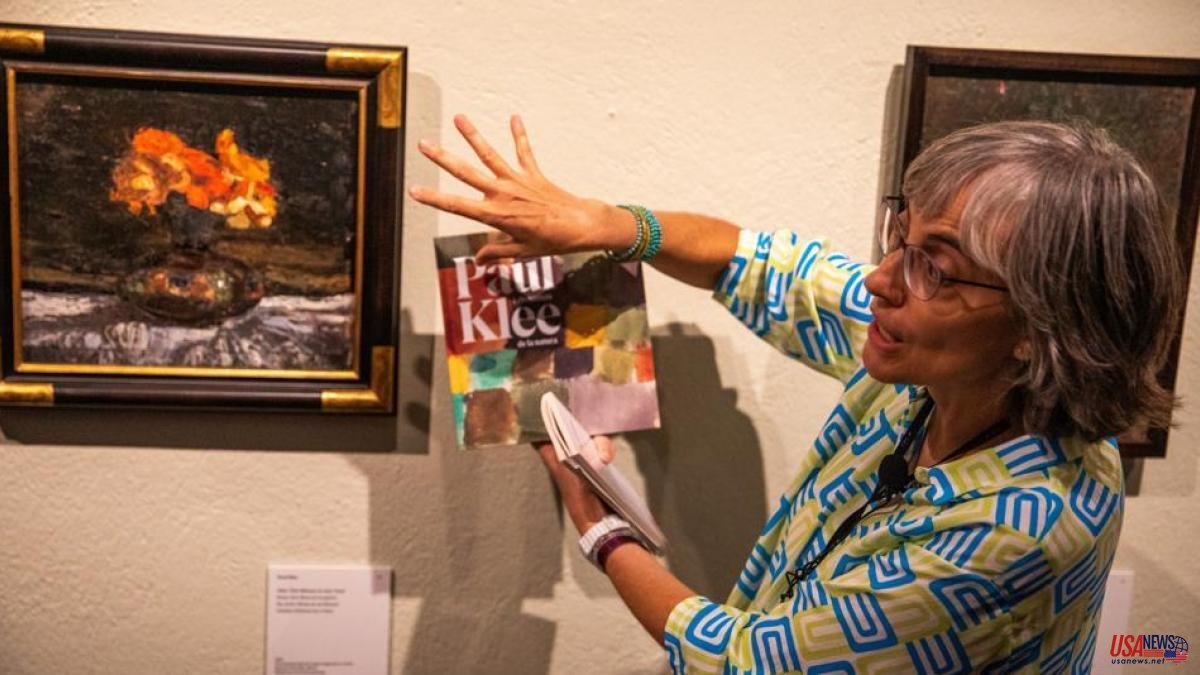It is commonplace that to break the rules you have to know them, yes. Above all, go beyond the norm. And so, the Swiss artist Paul Klee (1879-1940) perfectly learned the most normative, apparently objective and neutral naturalistic drawing techniques, and as he advanced he found that they were "tools that did not allow him to go beyond and go beyond the observation to decode the internal laws of nature”.
Martina Millà explained it to put in context the evolution of the artist in the exhibition that yesterday he presented to the Joan Miró Foundation, Paul Klee and the secrets of nature, in collaboration with the Zentrum Paul Klee in Bern –which in January will open an exhibition on I look-. There are more than 200 pieces between drawings and pictorial works, but also learning notebooks and herbariums that cover his entire life and start with his first documented drawing, at the age of four, on a sheet in which he traces a snail in pencil in front of two beetles . A small snail, yes, that could already prefigure the way he would have to deal with art.
Millà has wanted to curate this study of nature based on a chronological journey overflown by the importance of fundamental texts: on the one hand Paths for the study of nature, which Klee published in 1923 in a Bauhaus catalogue, and the work of Goethe, especially Attempt to Explain the Metamorphosis of Plants and Theory of Colors, which left their mark on him. For the curator, there are fragments of the German writer and thinker's Trip to Italy that resonate with her “like Klee put into words”.
The visit begins with Formative Years. The study of nature as a discovery of artistic personality (1883-1911), where you can discover the first drawings, sketchbooks and paintings such as a landscape divided into five fragments, like a folding screen, painted at the age of seventeen. Millà emphasizes how, already in this stage of searching for technique, Klee can be seen to learn “the ambiguity of the forms of nature” and take them further. Thus, for example, within the anatomical study of a foot, valleys and mountains can be seen, or what should be a meadow can look like a sunset.
In the second area, Trip to Tunisia and First World War. Nature as enigma and evasion (1912-1920), the years of the expressionist group Der Blaue Reiter are explored and how they took refuge in their work during the war, in a room represented as a color wheel in homage to Goethe.
Then comes the part dedicated to Teaching at the Bauhaus. The analysis of natural phenomena (1921-1931), which goes into the years of the teaching Klee, who made an effort to teach his students the lessons of nature, and where, in addition to works that study phenomena such as rain , lightning or the wind are shown in herbariums or a fish tank as a reconstruction of the one the artist had at home, where he often invited students to observe the fish.
At the end comes Synthesis and identification. The last period (1932-1940). This space shows the purification of his work, affected in the end by the degenerative disease that would cause his death at only 60 years of age, and which led him to paint with his fingers and, "aware of the organic nature of the body, allows him to reveal the secret of nature”, Millà explained, because “normally we live dissociated from the body” and it was through illness that Klee “reached maximum communion with nature”.
In addition to Klee's works, the exhibition breaks this monographic story with works by artists silenced by the official story of art history, contemporary to Klee such as Gabriele Münter, Emma Kunz and Maruja Mallo, whose works dialogue with those of the Swiss and are contextualize. And as an epilogue there is still an installation by Sandra Knecht, a Swiss artist born in the same canton as Klee and who reflects on the artist's last stage and at the same time refers to Miró.
In the presentation, the director of the Fundació Joan Miró, Marko Daniel, highlighted the "multiple and various possibilities of reading" the work of Klee, who is shown as an artist, but also as a sensitive person and as a pedagogue. The director of institutional relations of the BBVA Foundation, which sponsors the exhibition, highlighted after 34 years collaborating with the Miró the desire to put "new views on well-known artists" first, and in this case, moreover, with a theme as because as Klee "today society understands nature beyond beauty".
Catalan version, here













